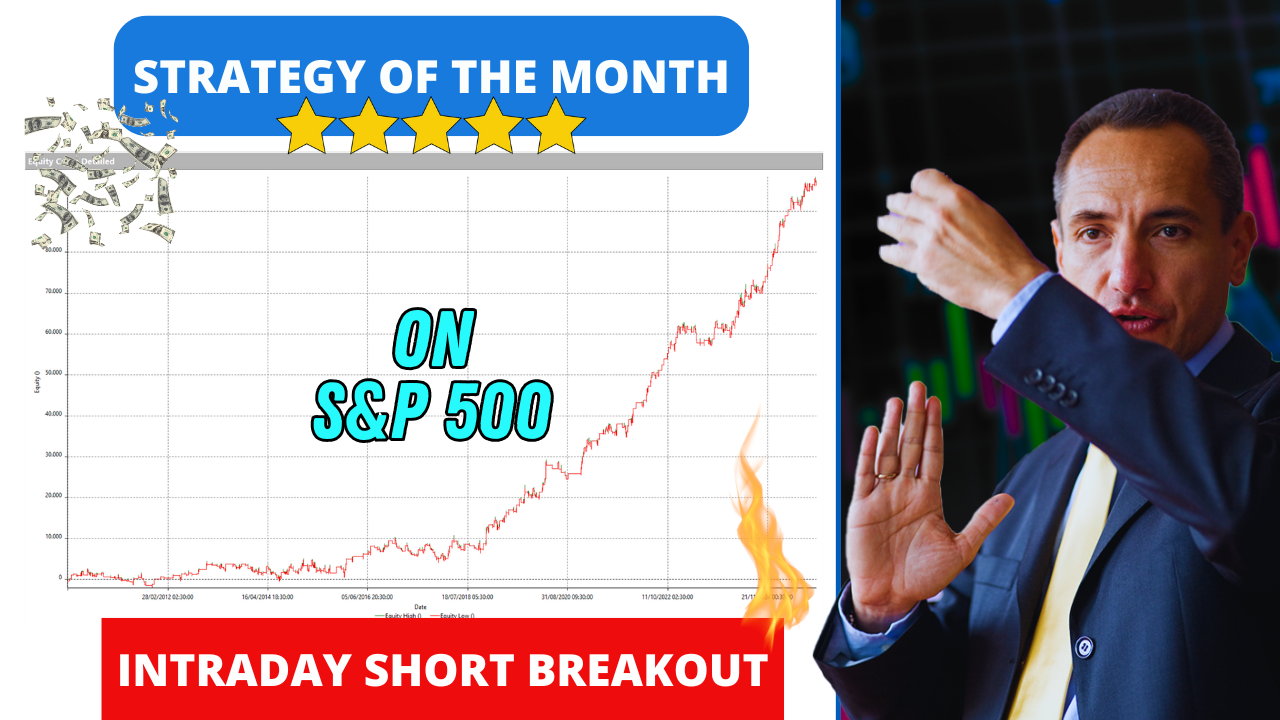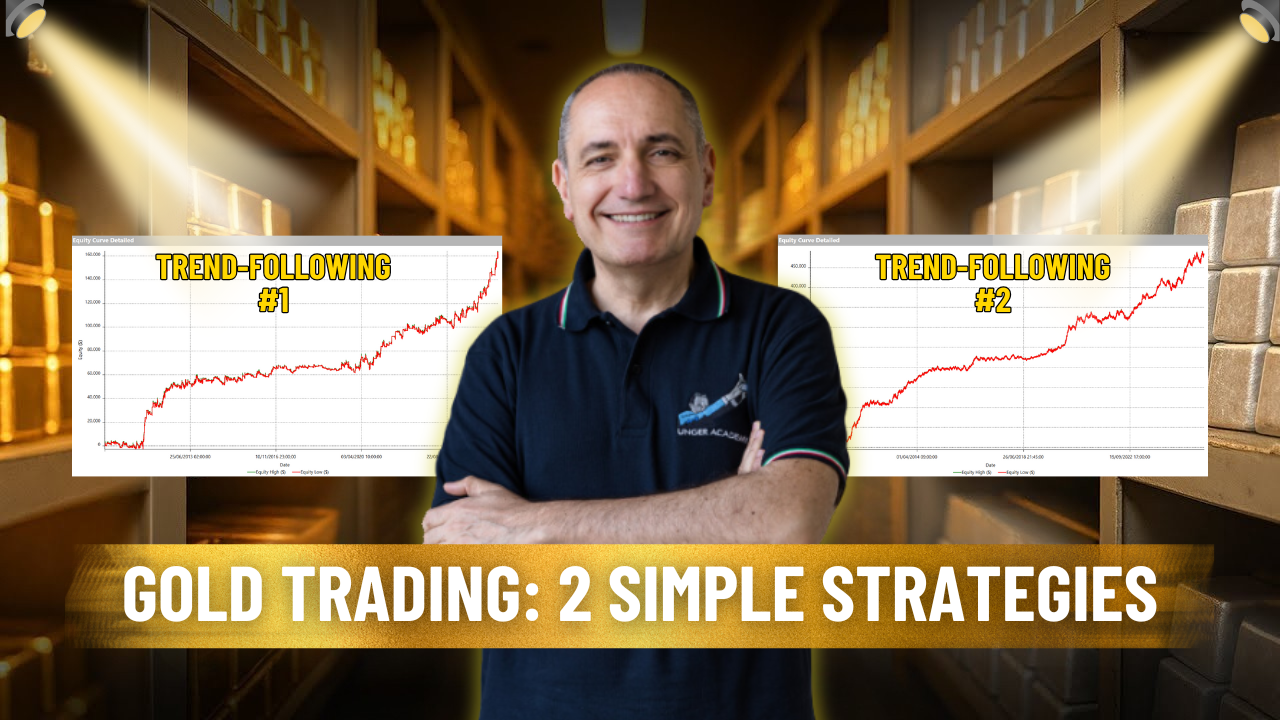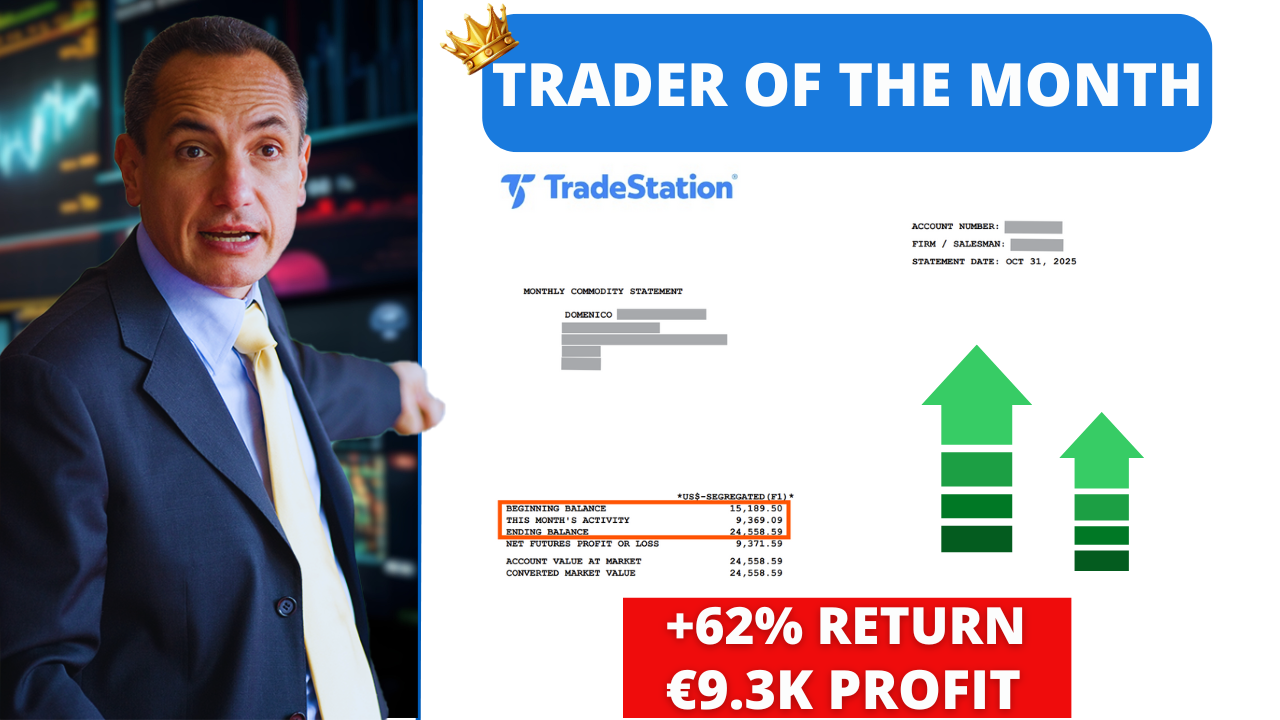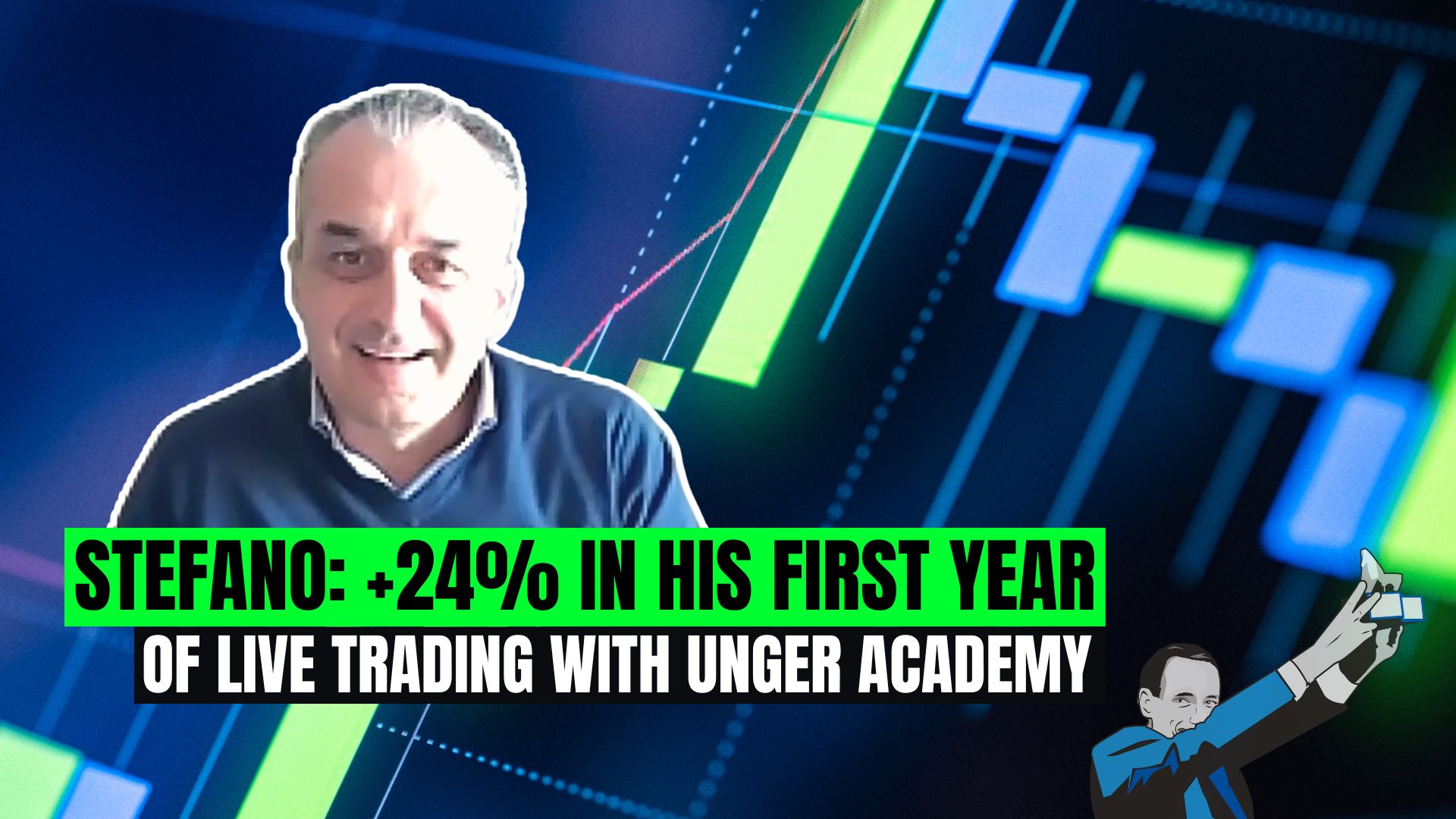Hey, everyone, and welcome to our usual chat on the strategies in our portfolio that have performed the best over the last period.
I’m one of the coaches at the Unger Academy here, and in this new video, we’re going to take a look at two strategies that have recently performed well in the Lean Hogs market.
Alright, so in this new video, we’re going to be looking at two strategies as said for Lean Hogs.
So, these futures are listed on the Meats market in Chicago.
They are very scalable products and can be traded with little capital amounts, and also they respond very well to trend-following strategies.
The only, let’s say, downside to these markets is that they aren’t very liquid, at least not as liquid as more traditional futures, such as, for example, the Mini SP 500 or Gold, just to name a few.
But we’ll see that in spite of that, they can be easily traded.
They are well-suited to trend-following strategies and especially multiday strategies, so broad-based strategies that allow for, let’s say, not too hectic trading,
because in this market, as mentioned, we would pay too much in slippage and commission costs.
But let’s go and take a look at the first strategy I want to show you today.
Take a look at how well it performed over the last period.
These take profits amount to $1,800, while the stop loss, as I told you, is very scalable and, in this case, is $650.
The strategy is based on a trend following approach and therefore it will open the long trades at a breakout of the highest high of the last hour.
Vice versa, it will enter short on a breakout of the lowest low of the last twelve bars, namely, of the last hour, since we are on a 5-minute time frame.
Trading will be limited to only 2 hours a day, namely between 9 and 11 o’clock.
Remember that this market opens at 8:30 a.m., Exchange time, and closes at 1 p.m.
So what this means is that the market is only open for a couple of hours, and the possibility that there are some gaps when the session opens is very high.
The strategy also has another condition aimed at limiting the number of days in the market.
And that is, the strategy will close its positions after no more than 8 days when a take profit or possibly a stop loss has not occurred.
Here we see the data uploaded more or less from the last two years, and it goes up to the current days in 2023.
We see how this strategy, even if it isn’t been very smooth, has been able to intercept the fundamental trend of this market, which has been, let’s say, mainly bullish, and that even the Equity Curve Detailed Short, let’s say, has suffered a little bit more during this phase, except for, let’s say, in the last period where it recovered in the face of a market decline.
The Equity Curve Detailed Long, on the other hand, worked extremely well and overall, the strategy produced gains of over $20,000.
These results are already net of fees and slippage.
We have included costs of $12,000.
$12,000 in 320 trades, so we’re talking more or less about $40 per trade so that we can faithfully replicate the possible live performance.
As we saw earlier, the short side is the one that has struggled the most, while instead, the long side is, let’s say, the one that has kept things afloat.
Let’s move on to the next strategy, it’s similar in some ways and is also applied to the same market.
It was also developed on a 5-minute time frame.
It is also a trend-following strategy that looks for the highest highs and the lowest lows of the last twelve bars.
But in this case, trading is limited to the 9am bar only, so, basically, half an hour after the opening, if the market breaks through the low, then we will enter short.
On the other hand, if it breaks out above the highest high of the last twelve bars to the upside, then we’ll enter long.
This strategy will then close its positions at the end of the week.
Then possibly also significantly upon reaching a stop loss, which in this case is tighter than the previous strategy, $550.
While instead, the take profit amounts to $2,000.
So, a strategy that’s very similar to the previous one but makes less trades.
And in this case, we could also say that the trades are of a higher quality.
Indeed, the Average trade is higher, and also, the number of trades is much lower compared to the previous strategy in the same historical period.
In this case, the short side did perform well, and the long side struggled a bit more.
Let’s look at the overall Equity Curve over the last two years.
Again, a rather uneven equity, but which turned into good gains at the end of the year, especially in 2022 with an average trade of 153€.
Again, just a reminder, these are results net of commissions and slippage.
In this case, the hypothetical slippage is much lower than the previous strategy.
This is because, as we have just seen, this strategy operates much less, and we say that it costs even less for our portfolio to trade with this system than with the previous strategy.
But both of them are potentially viable. They just have slightly different characteristics than the others.
So go and give it a try too!
We do hope that you have enjoyed the video!
And if there’s anyone among you who’s interested in the world of systematic trading, I recommend that you go and click on the link that’s provided in the description of this video. From there, you’ll be ablet to watch a video of Andrea Unger, get our best-selling book by just simply covering the shipping costs, or even book a free consultation with a member of our team.
If you enjoyed the video, please be sure to leave us a Like, subscribe to our channel and go and click on the notification bell to stay up to date.
Thanks again so much for watching and we will see you again soon! Bye bye!







